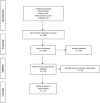Outcome of pulpotomy in permanent teeth with irreversible pulpitis: a systematic review and meta-analysis
- PMID: 36385132
- PMCID: PMC9669040
- DOI: 10.1038/s41598-022-20918-w
Outcome of pulpotomy in permanent teeth with irreversible pulpitis: a systematic review and meta-analysis
Abstract
Treatment planning is key to clinical success. Permanent teeth diagnosed with "irreversible pulpitis" have long been implied to have an irreversibly damaged dental pulp that is beyond repair and warranting root canal treatment. However, newer clinical approaches such as pulpotomy, a minimally invasive and biologically based procedure have re-emerged to manage teeth with pulpitis. The primary aim of the study was to conduct a meta-analysis to comprehensively estimate the overall success rate of pulpotomy in permanent teeth with irreversible pulpitis as a result of carious pulp exposure. The secondary aim of the study was to investigate the effect of predictors such as symptoms, root apex development (closed versus open), and type of pulp capping material on the success rate of pulpotomy. Articles were searched using PubMed, Scopus, CENTRAL, and Web of Science databases, until January 2021. Outcomes were calculated by pooling the success rates with a random effect model. Comparison between the different subgroups was conducted using the z statistic test for proportion with significance set at alpha = 0.05. A total of 1,116 records were retrieved and 11 studies were included in the quantitative analysis. The pooled success rate for pulpotomy in teeth with irreversible pulpitis was 86% [95% CI: 0.76-0.92; I2 = 81.9%]. Additionally, prognostic indicators of success were evaluated. Stratification of teeth based on (1) symptoms demonstrated that teeth with symptomatic and asymptomatic irreversible pulpitis demonstrated success rate of 84% and 91% respectively, with no significant difference (p = 0.18) using z-score analysis; (2) open apex teeth demonstrated a significantly greater success rate (96%) compared to teeth with closed apex (83%) (p = 0.02), and (3) pulp capping materials demonstrated that Biodentine yielded significantly better success rates compared to Mineral Trioxide Aggregate (MTA), calcium hydroxide, and Calcium Enriched Mixture (CEM.) Collectively, this is the first meta-analytical study to determine the clinical outcome of pulpotomy for carious teeth with irreversible pulpitis and it's predictors for success. Moreover, we identify the stage of root development and type of biomaterial as predictors for success of pulpotomy.
© 2022. The Author(s).
Conflict of interest statement
The authors declare no competing interests.
Figures






Similar articles
-
Efficacy of pulpotomy for permanent teeth with carious pulp exposure: A systematic review and meta-analysis of randomized controlled trials.PLoS One. 2024 Jul 5;19(7):e0305218. doi: 10.1371/journal.pone.0305218. eCollection 2024. PLoS One. 2024. PMID: 38968236 Free PMC article.
-
Pulpotomy for carious pulp exposures in permanent teeth: A systematic review and meta-analysis.J Dent. 2019 May;84:1-8. doi: 10.1016/j.jdent.2019.03.010. Epub 2019 Apr 11. J Dent. 2019. PMID: 30981748
-
Elective full pulpotomy in mature permanent teeth diagnosed with symptomatic irreversible pulpitis: a two years retrospective study.Clin Oral Investig. 2024 Jul 8;28(8):421. doi: 10.1007/s00784-024-05814-z. Clin Oral Investig. 2024. PMID: 38976067 Free PMC article.
-
Pulpotomy for mature carious teeth with symptoms of irreversible pulpitis: A systematic review.J Dent. 2019 Sep;88:103158. doi: 10.1016/j.jdent.2019.06.005. Epub 2019 Jun 20. J Dent. 2019. PMID: 31229496
-
Treatment Outcomes of Mineral Trioxide Aggregate Pulpotomy in Vital Permanent Teeth with Carious Pulp Exposure: The Retrospective Study.J Endod. 2017 Feb;43(2):225-230. doi: 10.1016/j.joen.2016.10.027. Epub 2016 Dec 29. J Endod. 2017. PMID: 28041685
Cited by
-
Randomized clinical trial of pulpotomy using a premixed injectable calcium silicate cement on mature permanent teeth with reversible pulpitis.Sci Rep. 2024 Feb 6;14(1):2994. doi: 10.1038/s41598-024-52818-6. Sci Rep. 2024. PMID: 38316823 Free PMC article. Clinical Trial.
-
Assessment of Endocyn on Dental Pulp Stem Cells (DPSCs): A Pilot Study of Endodontic Irrigant Effects.Methods Protoc. 2025 Feb 11;8(1):18. doi: 10.3390/mps8010018. Methods Protoc. 2025. PMID: 39997642 Free PMC article.
-
Concentrated growth factor scaffold-based pulpotomy of permanent molars with symptomatic irreversible pulpitis.Restor Dent Endod. 2025 Feb;50(1):e1. doi: 10.5395/rde.2025.50.e1. Epub 2025 Jan 17. Restor Dent Endod. 2025. PMID: 39979230 Free PMC article.
-
Biodentine Counteracts the Aging Process of Human Dental Pulp Stem Cells Through Wnt/β-Catenin Pathway.Int Dent J. 2025 Aug;75(4):100819. doi: 10.1016/j.identj.2025.03.028. Epub 2025 May 11. Int Dent J. 2025. PMID: 40354696 Free PMC article.
-
Drug sensitivity testing during dental pulp-dentin complex repair: its effect on treatment outcome and prognosis.Am J Transl Res. 2024 Jul 15;16(7):2814-2827. doi: 10.62347/ICYR9713. eCollection 2024. Am J Transl Res. 2024. PMID: 39114684 Free PMC article.
References
-
- Kassebaum NJ, et al. Global, regional, and national prevalence, incidence, and disability-adjusted life years for oral conditions for 195 countries, 1990–2015: A systematic analysis for the global burden of diseases, injuries, and risk factors. J. Dent. Res. 2017;96:380–387. doi: 10.1177/0022034517693566. - DOI - PMC - PubMed
Publication types
MeSH terms
Substances
LinkOut - more resources
Full Text Sources
Miscellaneous

